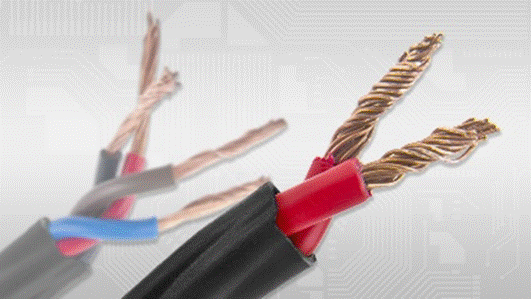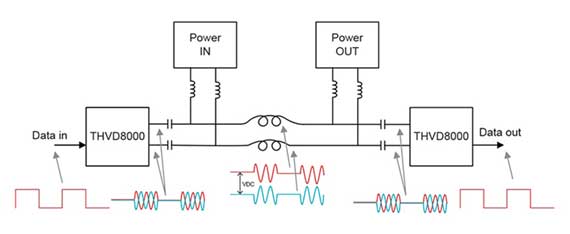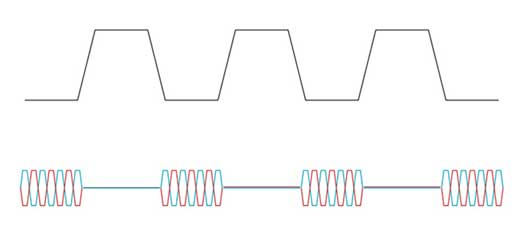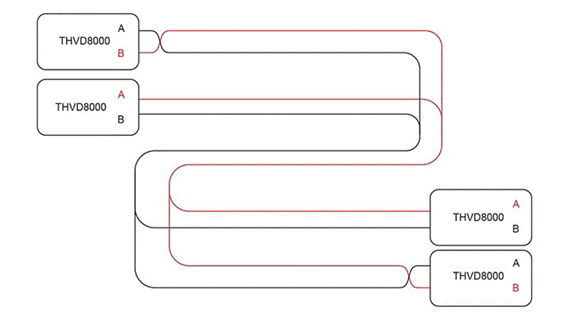
How does the RS-485 transceiver with OOK modulation function simplify the power line communication in the building automation system
“With OOK modulation function, the THVD8000 RS-485 transceiver suitable for power line communication can modulate data to the existing power line. This feature supports simultaneous power transmission and data communication in the same pair of wires, thereby significantly reducing system costs.
“
At the time of writing this article, Texas is experiencing a hot summer with temperatures reaching 95°F (32°C). However, because of the air conditioning, I feel very comfortable. Sometimes, this seems to be a modern miracle; simply press the button on the temperature adjustment device, and the indoor temperature becomes more suitable in silence. At the same time, although the outdoor unit is constantly operating, because it is far away from the control unit of the temperature adjustment device, no noise can be heard indoors. This kind of reliable long-distance connection may seem amazing, especially when the temperature reaches its peak during the day. In fact, it benefits from a relatively common communication standard RS-485.
Say goodbye to the four-wire cable

With OOK modulation function, the THVD8000 RS-485 transceiver suitable for power line communication can modulate data to the existing power line. This feature supports simultaneous power transmission and data communication in the same pair of wires, thereby significantly reducing system costs.
RS-485 is a differential signal transmission standard. In addition to residential environments, it is also commonly used in commercial heating, ventilation and air conditioning (HVAC) systems, factory automation, grid infrastructure, electrical appliances, and motor-driven industrial designs. These applications sometimes require long-distance transmission of RS-485 signals and power between nodes on the same cable. The traditional RS-485 system uses at least four wires to transmit signals and power at the same time: two wires are used for differential RS-485 signal transmission, and the other two are used for power transmission and grounding. The weight and cost of these long cables will increase the complexity and installation cost of the system. Moreover, if multiple wires are connected incorrectly, it may cause system failure, further increasing the complexity of the system.
Fortunately, when designing an RS-485 interface, a four-wire solution is no longer the only option. RS-485 transceivers (such as THVD8000) with on-off keying (OOK) modulation function can realize power line communication, ultimately reducing the number of wires from four to two, while improving system performance and reducing overall costs. THVD8000 integrates modulation and demodulation circuits and bus I/O protection, and can pass IEC ESD 61000-4-2 contact discharge and IEC 61000-4-4 fast transient burst tests, thereby providing the above advantages.
By integrating modulation and demodulation circuits, THVD8000 can increase the frequency content of the transmitted baseband data. Therefore, the DC and AC coupling of standard universal asynchronous receiver-transmitter (usually used for RS-485) and system-side interface can be simplified, no special coding is required, and it is suitable for low data rate applications. By modulating the RS-485 signal, as shown in Figure 1, these devices enable the system to transmit the modulated signal through the power line, so only a pair of wires is required. By selecting a wide carrier frequency range, the communication distance can reach 1km or more. This upgrade method is suitable for both DC and AC power supplies, and no special coding is required in the microcontroller.

Figure 1: Use THVD8000 RS-485 transceiver to achieve power line communication
The OOK modulation function of this device can modulate the low-level input signal under the carrier frequency, as shown in Figure 2.

Figure 2: OOK modulation
Since signal detection is to detect amplitude, OOK modulation adopts polarity-independent mode, as shown in Figure 3. Exchanging RS-485 A and B input/output (I/O) ports will not affect communication, and the polarity-independent mode does not require manual or software settings. This feature can greatly simplify the installation process and eliminate the risk of system performance being affected due to incorrect connection of A and BI/O.

Figure 3: Polarity-independent mode of THVD8000
Next time you enjoy the comfort brought by air conditioning, don’t forget that the RS-485 transceiver will bring you summer coolness by sending commands to the control unit. A two-wire solution like THVD8000 can further simplify communication and reduce system costs, so that when the outdoor temperature is approaching three digits, the air conditioner will work reliably, creating a cool experience for you.
The Links: 6MBP150RA060 EL512.256-H3-FRB



